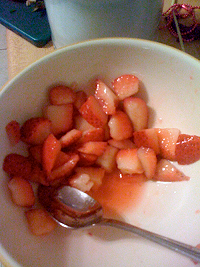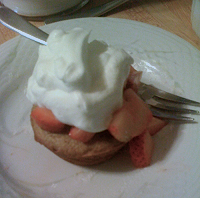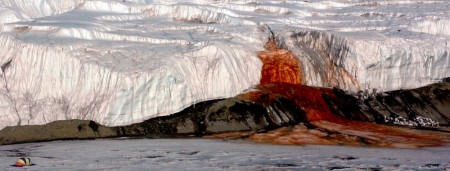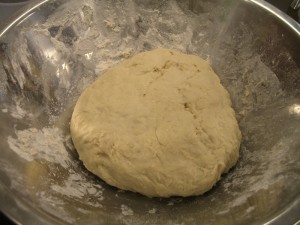Franz Lanting has a great storytelling voice and wonderful photographs that catalogue the history of life on Earth, from early organisms like stromatolites to the modern diverse forms of life (Lanting, 2007).
Tag: biology
Gardening in small spaces – self-watering containers
The above video, on how to build a self-watering container (this type is also known as a Global Buckets), seems extremely useful for the urban gardener, especially in Memphis where even gardening in the ground is difficult because of the poor, loessic soil. I’ve found container gardening (in cat litter buckets) to be much more effective, even though evaporation is a major issue with our hot summers. So I very much like the idea of self-watering containers.
These containers may also be an excellent complement to our greenhouse, because we can avoid having to water every day. If we got the right containers, or decorated them nicely enough, we might be able to sell these with our vegetables at the end-of-year plant sale.
The related videos on YouTube have a variety of other self-watering container variants. This version, with water jugs and a single large tub, also seems like it might be effective. There are also nice instructional video on how siphons work, as an easier way of watering a series of buckets. The Global Buckets project is a fascinating effort to help reduce malnutrition with simple materials.
Osmosis and strawberry shortcakes

Osmosis is the movement of liquids through a membrane, from areas of high to regions of low concentration. So, if you sprinkle sugar onto ripe strawberries, the concentration of sugar on the outside of the berries becomes very high. The juices will seep out of the strawberries’ cells, through the cell walls (the membrane), and create quite the delectable syrup. Add a few shortcakes and some whipped cream and ….

Note to self: try strawberries in the greenhouse this winter. Life sciences are next year and osmosis is a key concept.
Note #2: This is also a large part of the answer to the question of, “Why do we get thirsty when we eat salty foods?”
8% of human genes come from viruses
Apparently, 8% of human genes have been spliced in by viruses.
The assimilation of viral sequences into the host genome is a process referred to as endogenization. This occurs when viral DNA integrates into a chromosome of reproductive cells and is subsequently passed from parent to offspring. – University of Texas at Arlington (2010)
Half plant – half animal
The sea slug.
Next year we’ll be going into the differences between plant and animal cells, as well as into the differences between plants and animals. There are a number of fundamental differences, starting with the fact that plants can photosynthesize to convert sunlight directly into energy and animals can’t. Except for the sea slug. Sea slugs have found a way to pirate chloroplasts from green algae (found via Immersion Blog).
Chloroplasts are the green cellular bodies (organelles) that perform photosynthesis. The species Elysia chlorotica eats the algae when they are young and instead of digesting them entirely, keep the chloroplasts in their gut.
Young E. chlorotica fed with algae for two weeks, could survive for the rest of their year-long lives without eating – Brahic, 2008
What’s even more intriguing is that there is evidence that the sea slugs have incorporated parts of the algae into their own DNA so they can maintain the right conditions for the chloroplasts to survive in the new host (Rumpho et al., 2008). The Sea Slug Form has a nice page on other solar-powered slugs.
Mathematics in the natural world
Mathematics is the language of science. Scientists refine and refine their observations of the complexity of the natural world and try to boil these complex observations down to simple relationships, relationships that are expressed in mathematics. This, I think, is part of the human condition. Our brains are designed to extract simple relationships, heuristics, rules of thumb, from the observations of our senses. It is why Einstein’s equation, E=mc2, has captivated our imagination for so long, why physicists struggle to find the unified theory, and why fractals are so fascinating.
Cristóbal Vila’s short video (found via The Daily Dish) captures some of the magic of the relationship between mathematics and the world.
Blood Falls: Life in Extreme Environments

For millions of years, cut off from the atmosphere and the sun by an immense continental glacier, microbes survived in a lake of salty water under the ice. No air and no sunlight means no oxygen, so the water became anoxic and able to dissolve iron out of the rocks and sediment beneath the lake. But sometimes the lake breaches and the iron rich water comes to the surface where it is exposed to the air once again and the iron reacts with the oxygen to form a red mineral, hematite (rust). A template for life on Europa? Maybe. Blood Falls, Antarctica.
[googleMap name=”Taylor Glacier” width=”490″ height=”490″ mapzoom=”2″ mousewheel=”false” directions_to=”false”]-77.773, 163.37[/googleMap]
Rising bread
Yesterday, one of our experimental loaves of bread failed to rise, so re-tried it today and had a discussion about all the things we can do encourage it to rise. Since yeast is an organism, and we talked about the role of yeast in baking bread yesterday, this was a chance for the students to take what they’d learned and extrapolate into a new situation.
These types of situations pop up all the time in the student run business, especially when we try something new. It gets to the critical thinking skills adolescents need to practice. It is the reason Maria Montessori advocated for a boarding house middle school that ran a business. It is one of the reasons I insist that we start at least one new business every year in addition to our core pizza business.
